Text
Intersectionality: A Necessary Tool
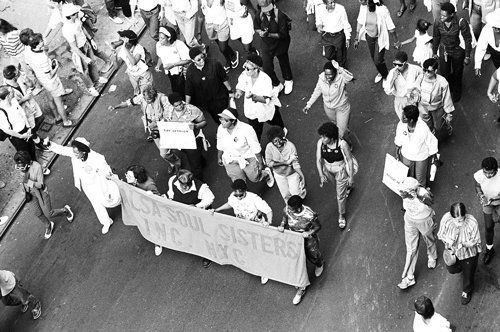
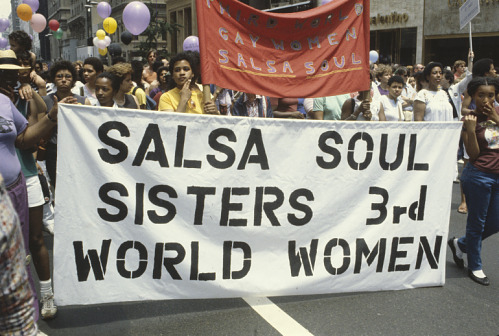

TL;DR Intersectionality plays a role in our everyday life as we deal with the weaving of our identities in various institutions and situations. Intersectionality is also a pivotal tool in creating frameworks that analyze and attempt to fight against system oppression, in which intersectionality has multiplicative effects on individuals. While focused on Black women feminists in this post based on the articles I was provided this concept extends so much further.
NOTE: Written with help from a fellow student Brennan Ventura taking Intro to WGSS Studies via our College. Feel free to reach out and chat with us about your feelings, understandings, comments, and questions!
Another day, another project in the name of awareness and activism. While this blog may seem to center on only queer rights I want to make it very clear that that is not the case. This blog speaks about and stands up for the many types of injustices present in our current systems and institutions. They do not have to intersect with Queer rights and advocacy but it’s time we focus on the fact that many actually do. Oppression doesn’t seem to go one at a time. You don’t generally deal with the racism inherent in all systems from simply being followed by shop owners in stores to a higher likelihood of police brutality one day and the next day dealing with inaccessible public places and buildings. This doesn’t take into account the discrimination you face from inside your own “safe” communities.
Because of this, I want to want to bring to people’s awareness a couple of concepts that have been pivotal in sharing such eye-opening perspectives on the mix of oppressions. Intersectionality and system oppression are very important terms that can help in analyzing the lives and situations different people or groups of people across the world may be experiencing. First off is intersectionality, intersectionality is a fairly new idea and a lot of different authors and people across multiple areas of interest such as activism, politics or science the answer to, “what is intersectionality”, would vary greatly. Most simply put, intersectionality is basically the differences and intricacies that humans in the world face in their daily lives. According to Sirma Bilge, and Patricia Hill Collins, sociology professors at Université de Montréal and the University of Maryland, say that intersectionality is “a way of understanding and analyzing the complexity in the world, in people, and in human experiences”(Collins and Bilge 2020, 1). But more so, intersectionality is a lens that helps to analyze the different situations and dilemmas that people across the world go through and how many times, issues such as gender violence, racism, sexuality, discrimination are connected through underlying strings and the issues that involve these systemic problems typically overlap as well. Kimberlé Crenshaw, an American lawyer, and civil rights activist, uses intersectionality to unveil the hidden binds in cases that deal with race and gender discrimination. Crenshaw views intersectionality as a way of showing that issues such as race and gender that may only seem as racial discrimination or gender prejudice are often overlapped in their issues. In a 2016 TEDWomen speech by Crenshaw she stated “in the same way that intersectionality raised our awareness to the way that black women live their lives, it also exposes the tragic circumstances under which African-American women die ”(Crenshaw 2016). And this leads us to system oppression or systematic oppression through the lens of intersectionality.
System oppression is the unwritten societal standards and traditions that are discriminatory towards certain races, ethnicities, genders or groups of people in general. For instance, in the United States African-Americans have undergone systematic oppression for generations and still continue to be oppressed today due to the societal standards grandfathered in by millions of people across the United States. Although explicit discrimination against African-Americans or explicit discrimination of any kind towards a specific group was made illegal by the Civil Rights Act of 1964, system oppression and the unwritten discrimination of certain groups throughout the United States are still as prominent as ever. And through the lens of intersectionality, it is evident that more often than not, an issue that may seem only racially charged or motivated is often intersectional and involves problems and perspectives from many other areas of oppression such as gender discrimination, xenophobia, homophobia, misogyny, etc. and just looking at the issue as one caused by racism will not solve the issue and lead towards more problems later on down the line. Looking at system oppression through intersectionality it is evident a vast majority of issues do not merely involve one aspect of oppression and discrimination but multiple aspects like race, gender, homophobia and many more. According to a case by Kimberlé Crenshaw a young girl was in a lawsuit against a company that did not hire her due to what she thought was racial discrimination, however, the judge overseeing the case did not agree with the girl’s pleas. When analyzing the lawsuit, Crenshaw noticed that the judge was not looking at the case through the right lens, and because of this, the young girl lost the lawsuit. Crenshaw described this case through a lens of intersectionality and how the young African-American girl could not get helped because she was suffering through both racial and gender charged systematic oppression. As we can see, system oppression and intersectionality play a big role in the world today, and intersectionality, seeing an issue through multiple perspectives, can help to solve so many of the issues brought about by system oppression and discrimination in the United States and other nations across the world that face similar issues and problems.
These concepts are far-reaching but I think it important to first analyze them in the concepts that they were emphasized in. The frameworks for viewing interlocking systems of power, in this case, focus on weaving feminism and anti-racism together. In the introduction of the book But Some of Us Are Brave we see this eloquently spoken by Gloria T. Hull and Barbara Smith, “Because of white women’s racism and Black men’s sexism, there was no room in either area for a serious consideration of the lives of Black women. And even when they have considered Black women, white women usually have not had the capacity to analyze racial politics and Black culture, and Black men have remained blind or resistant to the implications of sexual politics in Black women’s lives” (Cooper, Hull, Bell-Scott, and Smith 2015, xxi). It is out of absence for this framework that these movements are born. Because of the interlocking identity, instead of being embraced by both communities, they are cast aside and their needs are not spoken for nor are their experiences being shared. Kimberly Crenshaw on her TedTalk about “The Urgency for Intersectionality” spoke about how pivotal that these voices are heard. Her example also focuses on the lived experiences of Black women, mentioning that with the trickle-down sense of social justice that we have currently, people are slipping through the cracks and being left at crossroads of communities, alone and vulnerable (Crenshaw 2016). Social justice movements, despite their call for equality only tend to mention the story of those with other privileges, for instance, feminism speaking mostly for the equality of white women. In this manner, those with intersecting identities have multiplicative effects of oppression and discrimination. As Crenshaw states, Black women brought down by police violence are not covered in the media as breaking news like that of their fallen brothers because of their status as women that are Black and the media simply doesn’t have a frame for how to portray that.
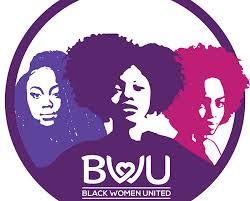
Of course, Black women are not the only intersectionality groups to have created such frameworks, demanding they be heard for their experiences. Similar movements have happened with queer people of color, disabled queer people, and indigenous people of nonbinary gender identities. Each of these groups speaks out against injustices of racism, homophobia, transphobia, colonialism, and ableism at the crossroads of where they interact, the very spot they were abandoned at. This is a commonality of all of those groups. They have formed communities based on this separation from not only the dominant, privileged culture but also the groups that are supposed to help them as well. This is by far not a new concept. These groups have been standing up for themselves for decades, creating liberation groups like the Salsa-Soul Sisters, a group made for and by Queer women of color. Just because their history has been erased, covered up, and ignored doesn’t mean that they haven’t been there fighting back. These groups are taking a stand for their stories and would love for allies to help spread their cause. Stay safe and stay educated and don’t forget to stand up for what you believe in!

Work Cited
Collins, Patricia Hill, and Sirma Bilge. Intersectionality. Cambridge, UK: Polity Press, 2020.
Crenshaw, Kimberlé. “TEDWomen 2016.” TEDWomen 2016.
Cooper, Brittney C., Akasha Hull, Patricia Bell-Scott, and Barbara Smith. But Some of Us Are Brave Black Womens Studies. New York: The Feminist Press at CUNY, 2015.
#feminismisforeverybody#feminism#intersectional feminism#black feminism#soul sisters#salsa soul sisters#intersectionality#intersectional activism#intersectional politics#activism#ableism#homophobia#homomisia#anti-racism#transphobia#transmisia#anticolonialism#But Some of Us Are Brave#liberation#activist#education
19 notes
·
View notes
Photo

Silence = Death (1989). Keith Haring.
2K notes
·
View notes
Text
lgbt ppl force their lifestyle on ppl? Try telling a straight woman at a hair salon you, a woman, want a buzzcut
108K notes
·
View notes
Text
Pardon the language but I really think that many of us need to hear this. Remember to stay safe and manage your health. Remember though that that means your mental health as well!
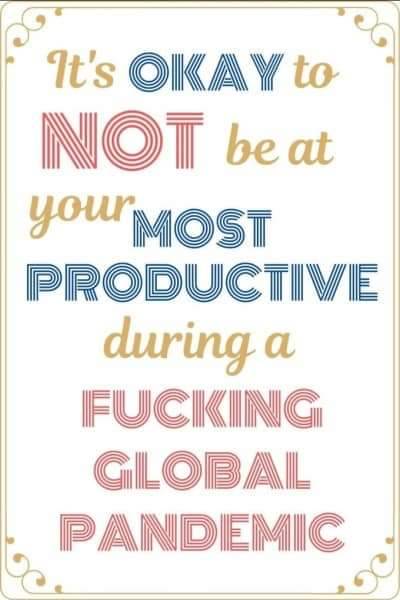
27K notes
·
View notes
Photo

My QS 262 presentation which means a lot to me is a speech of my own construction that is similar to the one by Larry Kramer called “1,112 and Counting”. He wrote his speech in 1983 and while I wanted to recap very horrific aspects of history that occurred then I also wanted to bring into awareness what has changed in the 37 years since his original speech. The audience is meant to be the queer community, just like his was, but also to be open to those that would listen. Due to its nature, it encompasses public health, politics, humanity, and activism. I didn’t intend for this to be the case but as the project progressed we were diagnosed to be going through a pandemic much like that of what those in the 80s experienced. To this degree, I didn’t mean to scare but frustrate the reader, much like Larry Kramer. I wanted my speech to be uniquely mine, but be reminiscent of the effect that he garnered. I plan to post this to my tumblrs LGBTQueeries and the-unending-kerfuffle as well as my instagram @one_steph_from_death. I want to place this speech out into the world. It would mean the world to me if you would read it and/or share. Love you all! Posts: Instagram Tumblr: LGBTQueeries: https://lgbtqueeries.tumblr.com/post/612895003214282752/a-school-project-as-an-ode-to-larry-kramer-32 OR The Unending Kerfuffle: https://the-unending-kerfuffle.tumblr.com/post/612895361502232576/a-school-project-as-an-ode-to-larry-kramer-32 https://www.instagram.com/p/B93EM5wB33G/?igshid=1nplv89ir0kq5
0 notes
Text
A School Project as an Ode to Larry Kramer --32 Million and Counting
TLDR; This speech was a project for a Queer Studies class that I participated in. It is a speech in the form of Larry Kramer’s speech about AIDS activism in 1983 called “1,112 and Counting” I also wanted to bring into awareness what has changed in the 37 years since his original speech. The audience is meant to be the queer community, just like his was, but also to be open to those that would listen. Due to its nature, it encompasses public health, politics, humanity, and activism. I didn’t intend for this to be the case but as the project progressed we were diagnosed to be going through a pandemic much like that of what those in the 80s experienced. To this degree, I didn’t mean to scare but frustrate the reader, much like Larry Kramer. I wanted my speech to be uniquely mine, but be reminiscent of the effect that he garnered. I plan to post this to my Tumblrs LGBTQueeries and the-unending-kerfuffle as well as my Instagram @one_steph_from_death. I want to place this speech out into the world. Please feel free to reblog and share and comment and chat with me in the comments!
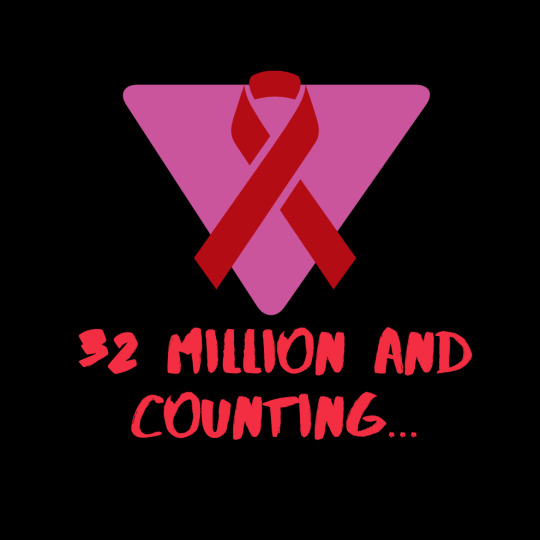
Larry Kramer started his count when the number was 1,112 and counting. In 1983. Think about that again. In 1983. Thirty-seven years ago. He screamed for help then, knowing full well we’d be obliterated as a group unless we stood up. He refused to be forced to die.
To frame this, a former entertainment star had been elected to the most powerful political seat in government. His staunch political and religious opinions led to the death of innocent people. He could have saved them by using his voice and asserting a need for research, laws, and education, but instead, let them die impoverished and discriminated against. If the hate and violent crimes didn’t get them, the sickness creeping in would.
Worst of all, as a community, we knew that he didn’t speak for us. We knew that this hate would kill us, yet we still remain silent. We remained silent as the hate trickled into the deepest pores of our community. We let the hate fester, building up and attaching to the difference among us until it finally separated us and dismantled us. We let the bigotry we so desperately try to run from infiltrate our ranks and break us apart into factions.
They were treated like lepers and untouchables (Barker & Cran, 2006). Hospital workers were nearly absent, just present enough to not be liable for neglect. Visitors were few and gay lovers, if they stayed, were sent away. Imagine that, slipping away in pain as you lose your vision and ability to breathe, your body starts deteriorating as it is filled with cancer and opportunistic infections. Alone. All alone.
And when you (inevitably) died your casket wasn’t lined in silk with cushions and roses. Yours was lined with plastic and biohazard material. Your brittle, thin body was crumpled up in the discarded sheets and hospital gowns and thrown into a garbage bag. No one was going to claim you, so no point in going to the morgue. Your toes, if you still had them, weren’t tagged, just set aside with all your other hospital belongings.
But the pain didn’t end there. Like the weekly garbage men, bags were taken to empty spaces and distributed into large, unmarked graves (Kilgannon. 2018). A secluded hole lost to history. A supposed bygone of the middle ages, but here to dispose of Jane and John Does.
If I was to scream like Larry Kramer, to these separated groups, I’d go hoarse within hours. As of 2018, 35 years after his speech, we have lost 32 million people to HIV/AIDS (CDC, 2020). That doesn’t include the people from the last 2 years.
We lost 32 million innocent people.
Yes, we lost gay men and IV drug users but they are still human. They still had the same dreams and aspirations as everyone else. They could have lived to be designers and playwrights just as well as becoming doctors and lawyers. We lost everyone one from, every walk of life. We lost painters, poets, magicians, musicians, surgeons, dentists, lawyers, physicians, firefighters, police officers, farmers, framers, parents, children. Their blood is on the hands of those that slowly took the life from them. The government is not free from their crimes.
But honestly, that’s not where the frustration and anger ends. Our history is being erased. Purposefully and eagerly. This situation that I’ve laid before your eyes seems to be that of 1983 and the pain of Ronald Reagan. The horror sounds painfully identical to what we deal with today.
Our current administration has continued some of these misinformed ideas and hateful actions. The Ryan White Fund, a fund specifically created to create a money source for HIV/AIDS research and treatment have received cutbacks and other plans set in motion like PEPFAR aren’t fairing well either. They are better in this term than in the past, but frankly, that’s not too comforting. This fund was the lifeblood for many organizations and they soon will be bled dry (Forsyth, n.d.). This does not take into account the other actions towards queer people in general. This takes into account only one facet of the government that is working against us. What about the judicial branch and the possibility to be tried for attempted murder for not disclosing your status to your partner (CDC, 2019)? It’s not like you have to do the same for other STIs. “On the count of giving chlamydia to your partner without disclosing your last date of testing, how does the jury find the defendant?” This doesn’t take into account the possibility you didn’t know of your own status.
And what if you wished to give blood? Say you’re gay and we’ll even go so far as saying you’re HIV-. They’d turn you away. They’d send you back for 12 months for not being able to prove you didn’t have sex with your male partner for 12+ months. May I remind you that lesbians and heterosexual men and women have gotten HIV and therefore can pass it along? This is possibly a law of Reagan’s 80s, but it’s still in effect TODAY (“LGBTQ Donors”, n.d.).
But I digress. The government is still not free from their crimes and institutionalized hate. I don’t wish to get too political but it is inevitable with the fact we’re all stuck in the past. Again, it’s not where my frustration lies.
My frustration is formed in the same disappointment that Larry Kramer had. In 37 years not much has changed and that the voice that we have as a community. We gained it with protests through organizations like ACT UP but we’ve apparently been diagnosed with laryngitis because we’ve become oddly silent. HIV/AIDS is not a disease of history. We haven’t cured the earth of this disease. It’s here and stuck to us like your legs to a hot vinyl seat. It affects everyone and intersectionality can increase your risk (CDC, 2019). There’s a reason it’s no longer called “Gay Related Immune Disease”. Yet where the hell are we?
It affects the young and the old. Yet we remain silent, pretending it’s not occurring.
We can blame it on the straight, cis majority but we are complicit in our own erasure, assimilation, and silencing.
We let our history fall by the wayside and be covered up with rainbows and pride flags used by businesses in marketing. We let our history be encapsulated by a month handed to us by the majority.
We let the atrocities that happened be forgotten along with many of the names.
We isolate those now that are HIV+ from queer-friendly functions, both blatantly and subtlely.
But most importantly we lost our gusto to fight for a better future for the generations that come after us. That’s what stings the most.
It’s important to remember that this disease is no longer a death sentence. You no longer have to feel the weight of shackles weighing you down towards the underworld. Provided, that is, you have insurance and can pay for your medications. But that is another government issue for another speech. With one pill a day, just like your Flintstones vitamins, you can live a normal life. You can date and with proper precautions, have sex and not pass it along to your partner. Undetectable = Untransmissable (UNAIDS, 2018).
While this may be a reality for us in our modern-day. I refuse to let those that sacrificed themselves for this cause be forgotten. We lost 32 million people and while I can’t list them all here or scream them to the heavens, I’ll damn well try. Those that came before us, despite their flaws, paved the way for us and I refuse to let them slip away because our government doesn’t like it. Join me in sharing the stories. If you want to see face to face, the humans that we lost, follow accounts like @theaidsmemorial on Instagram. End our silence. If it’s painful for you, imagine how it must feel for the friends and families of those that lost someone of the 32 million. They need your help to speak up.
We started this with 1,112 and counting. Now we’re at 32 million and counting. Let’s end the counting and start the protesting.
Works Cited
Barker, G., & Cran, W. (2006, May 30). Retrieved from https://www.pbs.org/wgbh/frontline/film/aids/
Centers for Disease Control. (2020, January 16). U.S. Statistics. Retrieved from https://www.hiv.gov/hiv-basics/overview/data-and-trends/statistics
Forsyth, A. D. (n.d.). Powerpoint presentation.
HIV and STD Criminal Laws. (2019, July 1). Retrieved from https://www.cdc.gov/hiv/policies/law/states/exposure.html
HIV by Group. (2019, October 25). Retrieved from https://www.cdc.gov/hiv/group/index.html
Kilgannon, C. (2018, July 3). Dead of AIDS and Forgotten in Potter's Field. Retrieved from https://www.nytimes.com/2018/07/03/nyregion/hart-island-aids-new-york.html
LGBTQ Donors. (n.d.). Retrieved from https://www.redcrossblood.org/donate-blood/how-to-donate/eligibility-requirements/lgbtq-donors.html
UNAIDS Explainer. (2018). UNAIDS Explainer. Retrieved from https://www.unaids.org/sites/default/files/media_asset/undetectable-untransmittable_en.pdf
#lgbtq#lgbtq community#lgbtpride#lgbt history#AIDS crisis#hiv aids#Larry Kramer#ACTUP#activism#school#project#coronovirus#horror#EJAF#Mercury Phoenix Trust#red ribbon#discrimination#lgbt rights#call to action#queer#queer pride#hiv/aids#ERASED HISTORY#history#protest
5 notes
·
View notes
Photo


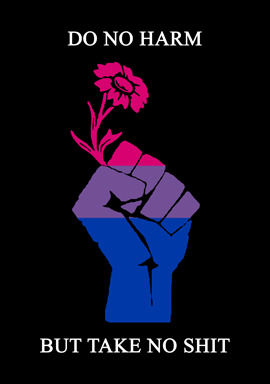

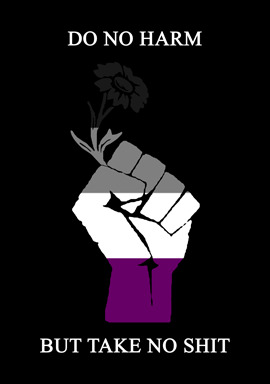
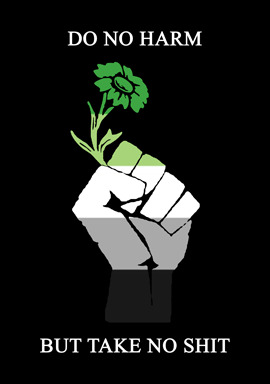


hope everyone’s having both a happy and safe pride month
15K notes
·
View notes
Text
This woman is an angel. Please don’t let this history be erased! We need more people like her, even now.
“In 1984, when Ruth Coker Burks was 25 and a young mother living in Arkansas, she would often visit a hospital to care for a friend with cancer.
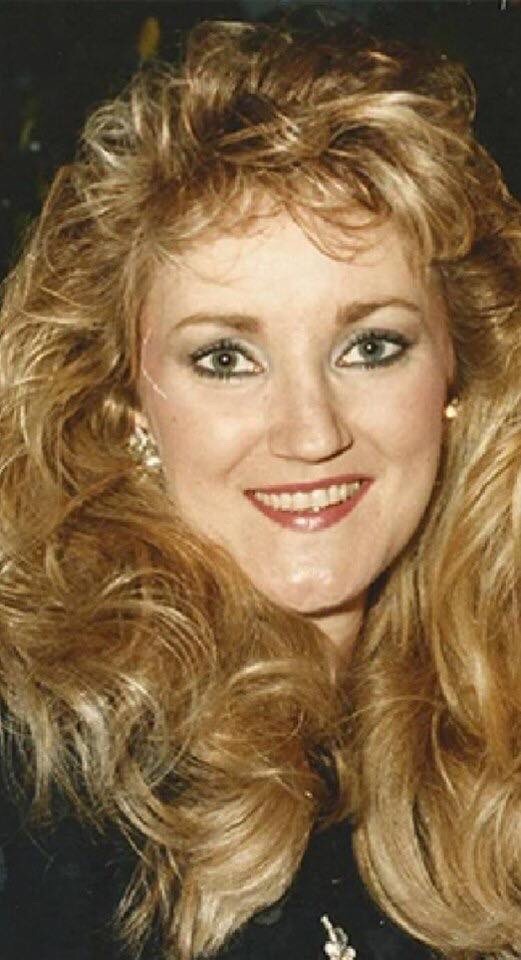
During one visit, Ruth noticed the nurses would draw straws, afraid to go into one room, its door sealed by a big red bag. She asked why and the nurses told her the patient had AIDS.
On a repeat visit, and seeing the big red bag on the door, Ruth decided to disregard the warnings and sneaked into the room.
In the bed was a skeletal young man, who told Ruth he wanted to see his mother before he died. She left the room and told the nurses, who said, "Honey, his mother’s not coming. He’s been here six weeks. Nobody’s coming!”
Ruth called his mother anyway, who refused to come visit her son, who she described as a "sinner" and already dead to her, and that she wouldn't even claim his body when he died.
“I went back in his room and when I walked in, he said, "Oh, momma. I knew you’d come", and then he lifted his hand. And what was I going to do? So I took his hand. I said, "I’m here, honey. I’m here”, Ruth later recounted.
Ruth pulled a chair to his bedside, talked to him
and held his hand until he died 13 hours later.
After finally finding a funeral home that would his body, and paying for the cremation out of her own savings, Ruth buried his ashes on her family's large plot.
After this first encounter, Ruth cared for other patients. She would take them to appointments, obtain medications, apply for assistance, and even kept supplies of AIDS medications on hand, as some pharmacies would not carry them.
Ruth’s work soon became well known in the city and she received financial assistance from gay bars, "They would twirl up a drag show on Saturday night and here'd come the money. That's how we'd buy medicine, that's how we'd pay rent. If it hadn't been for the drag queens, I don't know what we would have done", Ruth said.
Over the next 30 years, Ruth cared for over 1,000 people and buried more than 40 on her family's plot most of whom were gay men whose families would not claim their ashes.
For this, Ruth has been nicknamed the 'Cemetery Angel'.”— by Ra-Ey Saley
#AIDS crisis#hiv aids#aids#erasure#call to action#ejaf#mercury phoenix trust#erased history#red ribbon
403K notes
·
View notes
Text
Happy Pride Lovelies! I adore this time of year as I finally feel that I can be myself with my partner @gentle-achillean . It has been a wild ride but its the time of year again when I can say I’m queer, I’m here, and I’m proud.
I know that’s not the case for everyone and I hope that you have a rock or some support in some form, either online or in person. You as a human deserve unconditional love, respect, and dignity. I’m here for you and am willing to be that person. Message me, comment in my posts, tag me. I want to see everyone be safe and happy this pride month.
From the bottom of my heart and that of @gentle-achillean, we love you, we care about you, and we’re here for you.
#pride#pride month#lgbtq community#lgbtq#lgbtq+#representation#pronouns#love#i love you#support#contact me#I'm here for you#Perhaps I am the elusive boy that @gentle-achillean mentions...the mystery...
0 notes
Note
How do xe/xim pronouns work? Like grammatically?
most people i know say that it’s either pronounced “see/sim” or “zee/zim.”
in a sentence, it looks like this:“Hello! Today I met a person who goes by Shaun. Xe has a wonderful personality. That smile of xis really makes me happy. I could talk to xim all day although Xe doesn’t talk about ximself much. I wonder if xis day has been wonderful. I hope so!” (got this from the pronoun dressing room)
the full set is xe/xim/xis/xis/ximself OR xe/xim/xis/xis/xirmself (there might also be other variations but this is what i found)
24 notes
·
View notes
Text
My Take on Bohemian Rhapsody
Let me say, Freddie Mercury, is an inspiration of mine. He is a queer icon. An icon for the bullied and abused. And importantly an icon for how to be a wonderful, caring person despite international fame. The movie Bohemian Rhapsody has definitely shed some light on him, making these more apparent. I just want to rave about this movie but also point out some things that if the movie had more time I think more representation would have been nice. I just want to address certain things that I have seen come up that I think are problematic and deserve discussion
“Bohemian Rhapsody erases the AIDS crisis!”
No, it doesn’t erase it as that implies that it was never a part of the story. It was artfully woven in and melded into Freddie’s life. It was just as much a part of his life as his cats and his work with the band. AIDS is woven into the story outside of his life as well, adding to his insecurities about his sexuality and life with Paul Pretner. Don’t get me wrong, when I first heard this I was upset. As an activist against the stigma of HIV/AIDS, I was upset that this outlet that we could have had was not speaking of it. But it’s not what Freddie wanted. He never wanted to be a poster boy for the disease as he knew that not only it would ruin his career and the career of the band but it would be all he was remembered for. His life was music and he wanted that to be his legacy as well. It was his decision to not reveal his diagnosis until 24 hours before his death. To make the movie a PSA for AIDS would have not been a legacy to him which is ultimately what Brian and Roger were trying to do. The only thing that I think was poorly done, albeit being necessary to the plot is the fact that they shortened Freddie’s life by two years by altering the timeline of his discovery of his diagnosis. He was unaware that he was infected until 1987 and Live Aid occurred in 1985. Freddie had been in a relationship with Jim Hutton for two years at the time of his diagnosis. I know that they wanted to artfully integrate his diagnosis into the story, I seriously didn’t care for the shortening of his life. I also think that this could have been included and would have helped introduce Jim more into the story.
“The movie is bi-erasure!” or “Freddie Mercury wasn’t bisexual, he was gay!”
I will admit that I agree that the issue of Freddie’s sexuality could have been better portrayed having shown more of his other relationships than his one with Mary Austin. I wish that Jim Hutton could have been more in the movie as he was a pivotal person in Freddie’s life towards the end. That man was his husband, he wore a wedding band for him. He lived happily and shared his final breaths with Jim. Mary was also this for him. He wanted to marry her. He wanted a life with her. Women were just as appealing to him as were men. She was a large part of his life, especially during their early career, of which the movie focuses on. To erase her is to not tell a huge part of Freddie’s life. Where I find fault in the discussion of Freddie’s relationships is the fact that the prominent male relationship shown in the movie is Freddie with Paul Pretner, his decidedly most toxic partner. I don’t say this in just my pure dislike of him. The band, as well as Freddie himself, admitted that his influence was harmful for Freddie and led him to unhealthy behaviors. I was sad to not see Jim get more screen time as that relationship was full of love and admiration, something that Freddie needed as an insecure man. In Jim, it seemed he found the same home he found earlier with Mary and I definitely think that this is downplayed in the movie, much to my chagrin.
I think we too often forget that Freddie is not here to speak for himself. This is a devastating fact to his fans and his friends and family. Brian May and Roger Taylor, two of his bandmates and dearest friends were the producers of the movie. They were there from the conception of the film, during the filming, and along the press tour. They made it clear to the directors that they wanted to pay homage and give love to a wonderful man that died way too early. You can tell they miss him dearly and would love to have him back. It’s one of the reasons bassist John Deacon retired from music. So yes, of course, Roger and Brian are going to edit things and focus on a specific timeline. That is precisely what they did. They focused on the bands early years from the late 1960s to 1985 and their performance at Live Aid. It is true chronologically that Mary was his more present love interest at that time. It is also true that Jim only showed up around the end of that timeline for Freddie. They stayed true to what they said they were doing and to be truthful I highly doubt that anyone could have encapsulated the man that was Freddie Mercury. They did the best they can and honestly, I wholeheartedly believe that they have Freddie’s best interests in mind. Give props to the band, they lost him too. They definitely put a lot into the two hours they had and have readily admitted that had they had more time, more would have been included in their story.
#freddie mercury#bohemian rhapsody#bohemian rapsody movie#bohemian rhapsody movie#rami malek#bisexual#hiv aids#aids crisis#aids#brian may#roger taylor#john deacon#joe mazzello#gwilym lee#ben hardy#farrokh bulsara#glam rock#red ribbon#biopic#bi-erasure#queer#lgbtq community#lgbtq#lgbtpride#lgbtq pride
32 notes
·
View notes
Text
I don’t want to diss Queer Eye or any of the people on the show as I think they are doing a service in showing the variety of people in the queer community past the original stereotypes that people base their opinions of. They’ve featured prominent lessons on dealing with unsupportive parents, grief and loss and dealing with your own demons. Most of these men reveal that this is not a persona, as their social media shares the same critical messages they portray on the show. They are all genuine men with their own struggles and they have gained a voice for not only their struggles but the struggles of the communities they belong to. For the most part, I believe they use this power well. The only exception to this is Johnathan van Ness’s use of female pronouns for himself, others, and even inanimate objects. To me, it seems he’s throwing around pronouns quite haphazardly as everything from his heels to his coffee cup are “her”. Johnathan has frequently done this on the show, only stopping when the episode directly involved a trans man. I will say that this has happened for ages with men calling their motorcycles “she” and women naming their cars after an ex or current boyfriends. I have my qualms with that too.
Now, don’t get me wrong, as a person who has gone through a gender identity journey and has experimented with different names and pronouns, I completely understand if this is a gender exploration. He is free to be whoever he wishes to be and identify as he wishes! He looks fabulous in his heels and skirts and can slay in whatever he chooses to wear. That is certainly not my problem. What my concern is, is that without stating that this is the case it could be indirectly harming the community he is trying to empower. This show has given him a voice as well as brought him direct attention. While this version of Queer Eye has brought to the public view that there is more to the gay community than flamboyant men who call each other queens, that’s not what everyone in the audience sees. Certain people who see these men in the media can use this to justify their actions towards the queer community. They are made uncomfortable by what is shown and use this to fuel their fear and sometimes even hate towards the community. Johnathan, unfortunately, personifies their image of a gay man that they should fear. That is completely unfair to him. This more immediate attention on him calls more attention to every little detail he does, including his mannerism of using female pronouns with everything. With him using pronouns haphazardly it can spread the message, though he doesn’t intend it to, that pronouns are secondary and unimportant. This can spread the behaviors of refusing to use pronouns, calling people their dead names, and even pure avoidance of queer people in general.
None of this is right. It shouldn’t have to be this way and Johnathan shouldn’t have to explain himself. But in this case, with the state of the world as it is, I feel it is a bit necessary. I can tell from the show and otherwise that his intention has never been to hurt people, but it is. I’m not wanting him to change. I just think that people should own up to their actions and behaviors, even if the results are unexpected or unintended. He’s a wonderful man and a role model, but actions have consequences. We as a community need to stand together, help each other, and most importantly own up to when we hurt each other. So be proud, be kind, and be responsible
#lgbtq#lgbtq community#queer eye#responsibility#representation#Johnathan van Ness#jvn queer eye#jvn#pronouns#be aware#gender#transgender#gender journey
11 notes
·
View notes
Text
AroAce gay guys? A classic
A-spec gay guys in general? Spectacular
Gay guys overall? 👌🏼👌🏼👌🏼 love them
93 notes
·
View notes
Photo






Thank you for reading and sharing! <3
Please consider pledging on my Patreon so I can continue making comics like these! You can also buy me a coffee with KoFi if you’d rather make a one time contribution! I truly can’t do this work without you!
Being trans can be tough sometimes but it’s also a blessing. A sacred gift. A journey few can know. A joy!
Thanks again for reading! ^_^
88K notes
·
View notes
Photo










Space Helmet Pride Pins
Glorious Weirdo on Etsy
See our #Etsy or #Enamel Pins tags
38K notes
·
View notes
Text
Trans Representation in Musical Theater
TL;DR Musical theater has long been a haven of the LGBTQ+ community but in some respects, representation is still lacking. I can think of two canon trans characters, with only a few characters that have been decided on by the fans. Comment or reblog with additions!
People are begging for representation and musical theater is no different. From its creation and its increase in popularity musical theater has been trying to tackle tough concepts that society apparently only thought palatable in song. As the AIDS crisis ravaged the community more visibly than in other places playwrights and activists alike thought it time to involve more queer characters on stage. I can go into a whole other post about the wonderful works of William Finn and his inclusion of queer Jewish characters, but today’s focus is on something different. Despite the rising amount of queer characters we see in musical theater, more so than in other forms of media there is a group that is often overlooked still – trans people. I’ve listened to a wide variety of musicals but I do not claim to have heard or seen them all. I hope to start a conversation about this and perhaps even learn about some hidden gems I haven’t heard of before.
There are not many established trans roles in musical theater, though fandoms have surmised and assumed based on actor/actress portrayals. These roles, as are seen with every other minority group are either relatable, honest depictions of these groups and their struggles or comedic portrayals of stereotypes. Granted I believe this to be a spectrum. To end this post on a positive note I want to start with the latter first. There are plenty of what many consider “drag roles” on Broadway like Edna Turnblad from Hairspray or Lady Hyacinth D’Ysquith from A Gentleman’s Guide to Love and Murder. These are nothing more than trying to be a piece of comedy with fake breasts being swung around and flaunted or wig malfunctions. They are surface characters that really don’t get much show time. Oddly, these women are portrayed as masculine and large, not really straying from the fact that these are men in dresses.
When drag as used a plot point, other issues arise. In the new Broadway feature of Tootsie, based off of the 1982 movie with Dustin Hoffman, features a man dressing as a woman to get a role in a soap opera only for things to be compromised by him falling in love with his co-star. I think that this movie is of its time as this was in an era where trans women, if you could call it that, were being shown as evil and manipulative as they used their feminine charms to trap men and women alike just to reveal they are charlatans. These characters don’t have a desire and yearning to be the “opposite” gender, often it is for monetary or relationship reasons. It suits their needs so they use it. Tootsie is often used as the quintessential version of this trope. I don’t want to pick on a musical I have not seen or heard, but I’m just intrigued as to why, in this supposedly more progressive era, that we would resurrect a trope in movies that are often used to disenfranchise trans people, trans women especially. Tootsie is not alone in this venture as shows like Priscilla, Queen of the Desert have a very interesting relationship with drag as from what I can understand it is more of a way for the main character to make money. This isn’t inherently transphobic, as I do not what to pin either of these shows like that. Drag is a legitimate job and hobby for many and doing so for money doesn’t make you bigoted just because you’re not using “cross-dressing” as a gender expression tool.
This isn’t always the case with drag as a plot point, however! There are certain shows that use it to explore issues of gender, homophobia, sexuality, among other things, without making the characters decidedly trans. The show La Cage Aux Folles uses drag as a way for a gay man to express himself and make money, something he enjoys doing, and contrasts it with his fear and “need” to use it to hide from his son’s fiance's conservative parents. It brings up the psychological issues of being yourself versus saving other people from discrimination by association. He wishes to flaunt a fluid line between male and female, blurring everything. Rocky Horror Picture Show also blurs the lines between what’s appropriately masculine and feminine, featuring Frank-n-Furter as a bisexual “transvestite” alien. While terms have changed from the 1970s, he is essentially a man who likes to wear women’s clothing. There is no stated gender reason behind it, as there really doesn’t seem to be a huge emphasis on gender identity or appropriate gender expression on his home planet of Transylvania. While not expressed as transgender these characters explore gender identity and definitions of gender in quite progressive ways.
Lastly, I want to focus on the only two established trans/genderqueer roles that I can think of – Lola from Kinky Boots and Hedwig from Hedwig and the Angry Inch. Both of these characters struggle throughout the show to be accepted and understood with transphobia rampant and shown through characters that you are meant to hate. What’s interesting is that these characters often use humor as methods to combat this and stay strong, only revealing in intense ballads the emotional struggle and turmoil they are going through. Out of all of the shows mentioned here, I think that these characters are coded the best as trans, revealing a more relatable struggle than campy portrayals. These characters have depth, make questionable decisions, and more importantly, are the main characters. Their struggles are the main story or part of it, making it more present as an issue in the lives of those around us. Where I think these roles kind of crumble, however, is casting. Almost all, if not all, of the people playing these roles, are cis men, of varying sexualities. Hedwig has been played by Neil Patrick Harris (out gay man), Andrew Rannells (out gay man), Anthony Rapp, among others. Only two of the productions have cast women, Lena Hall and Ally Sheedy, as the main trans woman character of Hedwig and as I what I’ve seen no openly trans woman has been cast in mainstream productions. Lola has been given the same treatment with men such as Wayne Brady, Todrick Hall, and Billy Porter having been chosen for the role. I do not think that they should be slighted for their performances as they have done wonders with the character. I do think, however, that the lack of trans actors and actress let alone roles in Broadway is telling. As a progressive art form compared to other American media it is a bit confusing as to why these actors are not shown. These actors exist, media has shown it, but yet they aren’t being shown to the masses. This doesn’t give strong positive messages to the audience, especially those that relate to those characters when they cannot see themselves on stage.
That being said, I love these shows and am still in the process of exploring what other shows I haven’t heard or seen. Broadway seems to be light years ahead of other media, and in some places a bit behind, but overall they stay true to their goal of pushing the envelope and exposing audiences to new situations and cultures. They tap into your emotions and reveal things about yourself that you may not have seen. Plus they have some good shower jams and ballads. Like other media, musical theater is flawed when it comes to representation, but they have made some huge steps as well. Just because I point out flaws doesn’t mean I don’t enjoy these roles, musicals, or actors. In fact, let’s just say that I’m not throwing away my shot to stand up for my fellow trans people. Let’s start some discourse!
#musical theater#musicals#Broadway#representation#lgbtq#trans#transgender#Todrick Hall#andrew rannells#Billy Porter#Lola#Kinky Boots#RHPS#rocky horror picture show#tim curry#la cage aux folles#tootsie#gglam#the gentlemans guide to love and murder#hairspray#hedwig#hedwig and the angry inch#Neil Patrick Harris#Anthony Rapp#Wayne Brady#discourse#priscilla queen of the desert
0 notes
